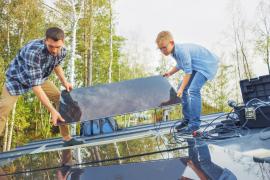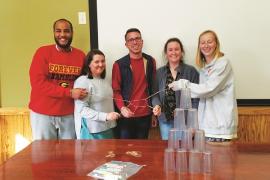Many of your camp’s alumni may attempt to convince you that camp isn’t what it used to be and that so much has changed. They are right, of course. However, their point is that the camp program is no good because it just isn’t the same experience as fifty years ago. Being the talented visionary that you are, you delicately explain all the great things that are taking place at your camp, your higher retention rates, your fund-raising successes, and other indications of innovative and dynamic camp programming. It’s all to no avail; your alumni are still not convinced.
A great challenge for camp directors is to maintain the delicate balance between providing current programming that meets the needs of today’s campers and exciting past campers and staff with a new vision of camp programming. While past participants and staff often feel strongly about what goes on at camp, the current camper and parent have the greatest stake in this experience. It is vital that the program at camp not stagnate "because that’s the way we’ve always done it."
Careful evaluation of current program content and constant consideration of children’s spiritual, emotional, and physical needs will always be in vogue. Consider these principles of program development and evaluation when reviewing ways to keep your camp program current.
What Worked Then May Not Work Now
What worked five, ten, or fifty years ago may not work today or in five years. Campers’ preferences change at the speed of technology. Hundreds of media impressions influence children each hour. Youth are less physically active than ten years ago and are less prone to accept physical challenges. The need for instant gratification, more comfort, and less risk in a child’s life creates many challenges for creating camp programs that appeal to both campers and parents and meet the goals for healthy child development. The boon in specialty camps is a response to this less generalized child. These camps fill a void in summer programs, targeting a specific and marketable need or desire of children; however, they may lack a focus on the whole child.
Connect Campers with Tradition
The second basic principle is "don’t throw out the baby with the bath water." History and traditions are as important in today’s program as prudent risk management and emergency procedures. Children need to know their roots in order to feel connected to family, community, and to their camp. Some aspects of your current program may seem dated, but in reality they are very current and vital. These traditions should remain unchanged. Sharing the history of camp and why the traditional programs are still in place will create a connectedness for campers in their camp community.
YMCA Camp Reed in Spokane, Washington, has a unique way of sharing their camp’s history. Camp Reed’s campfire circle is at the top of a bluff that overlooks much of the camp property. During a fifteen-minute hike to the campfire site, various senior staff members share stories of the history of the camp, how the lake got its name, and information about the surrounding properties. This routine happens during every hike to the campfire site, instilling the campers with a sense of the rich history behind the camp. Camp Reed also boasts a strong retention rate of 70 percent!
It is vitally important to maintain camp identity while allowing for meaningful program development. Noting where a program falls in its life-cycle will help you keep it current. Review the original goals and objectives for the program and assess if these are still being met. Make changes and adjustments as needed to the content and format of the program, and don’t be afraid to decide that it no longer is a viable option at camp.
Discover Untapped Resources
Discover what resources your camp property has that have been untapped. Think creatively and critically when determining what areas in camp can be used for multipurpose programming. Don’t think only in terms of buildings because so much at camp happens with little or no facilities. Environmental education or nature study are prime examples of current popular programming that takes no elaborate site development. An outdoor "predator and prey" simulation game can be set up using rubber bands, crayons, index cards, and flagging tape — campers love it.
Create a new program in an unused space
Farming has also become a popular way to utilize camp property in a positive way, and you can begin with little resources and effort. YMCA Camp Orkila on Orcas Island, Washington, decided to form a Pioneer Camp. By expanding a mostly unused garden site and creating a small animal area with sheep, goats, pigs, chickens, and turkeys, the camp had a great attraction for their many weekend guests. The challenge was to use this wonderful resource during the summer. Using an experiential learning model, Camp Orkila outlined a program where campers helped care for the animals, assisted in the garden, and did all of their own cooking in Dutch ovens. A small site with housing shelters and an outdoor kitchen area were created close to the farm.
Camp Orkila introduced Pioneer Camp as a pilot program in their summer brochure and offered limited session dates. The response was overwhelming especially from veteran campers seeking a new experience. The program doubled the initial target enrollment in the first year, and the following summer it doubled enrollment again.
Be Aware of Changing Demographics
Lastly, being keenly aware of how demographics are changing will aid in thoughtful program creation and implementation. The teen population is on a steady rise, and the increase is predicted to continue into the millennium. Consider how this population boom will affect your camp enrollment now and in the future. Programs designed especially for teens are essential in attracting this booming segment of the population and have long-lasting implications for staff development.
Teens seek challenges for body and soul
Teen Adventure Trips or Caravans continue to be a popular option for older campers and teens. There is also a segment of the teen camper population that is not interested in roughing it. Creating camp-based programs can prove to be attractive alternatives for teens not seeking the adventure experience. Expanding teen leadership or CIT programs not only meet a current need, but have great payoff in staff development. Creating space in camp just for older campers or teens can be just as important as creating the curriculum that stimulates their mind, encourages ownership in camp, and challenges them physically.
In San Diego, California, the camping branch of the local YMCA struggled with providing teens with what Executive Director Tom Madeyski calls "a controlled immersion into another country." They developed a successful service learning program in which teens, attending both summer and non-summer programs, are housed at Camp Surf and take day trips to Tijuana, Mexico, for service projects. Not only do the teens pay a program fee, but they also fund a specific development project. Teen participants expressed good feelings as they witnessed tangible results of their efforts.
The YMCA Earth Service Corps program continues to increase in popularity and enrollment throughout the country. Camps can take advantage of this model in implementing service learning for teens throughout their summer program and all year long. By providing leadership for YMCA Earth Service Corps during the school year, staff may provide the summer experience to teens throughout the year. This has positive retention implications as well as positive program outcomes. As YMCA Earth Service Corps strives to work with more youth and expand its reach, camps become natural partners. As camps strive to reach this growing segment of the population, YMCA Earth Service Corps provides recruiting avenues, program models, and staff expertise.
When things are going well and camps are full, it’s hard to take a critical look at current program. This cannot be a once-every-five-years task or done only when enrollment slumps; evaluation must be an ongoing effort. Maintaining strong camper enrollment while providing a camp program that is meaningful to today’s kids will keep camping a necessary component in the positive development of youth.
Geoff Ball is executive director of the YMCA of Greater Boston camping services branch.
Originally published in the 1999 September/October issue of Camping Magazine.


